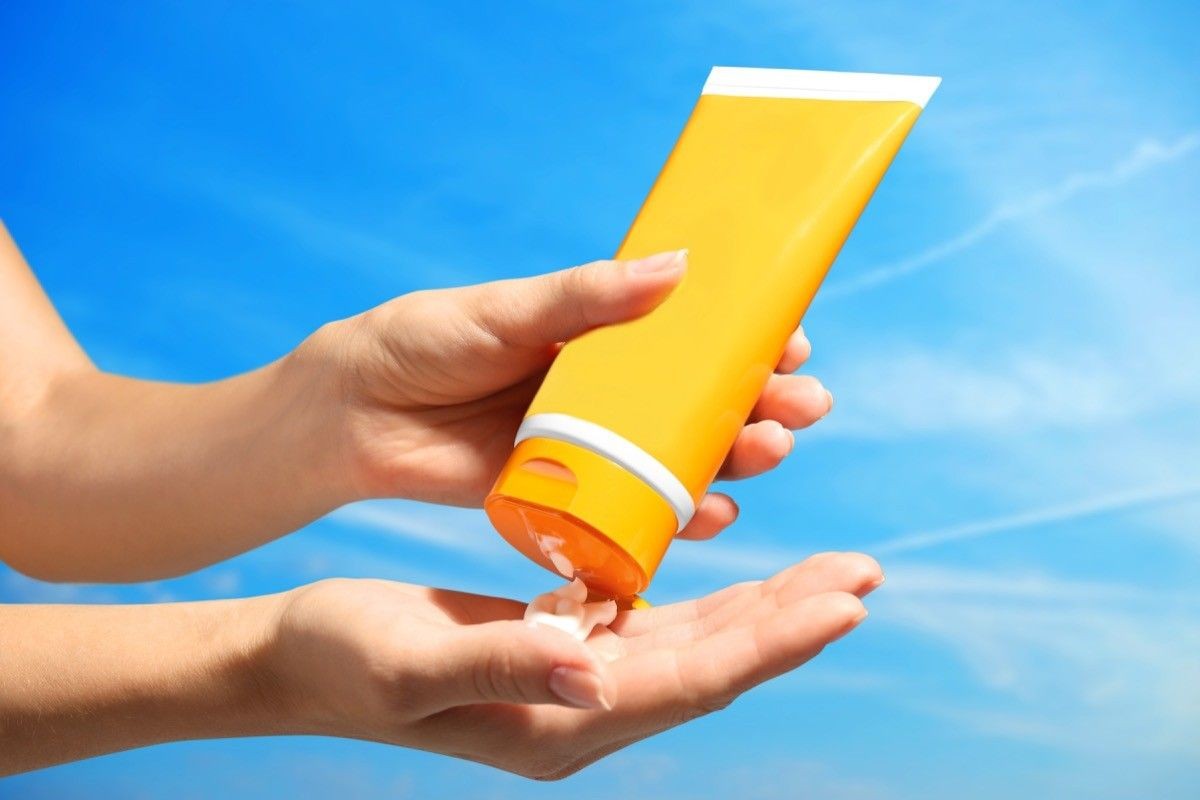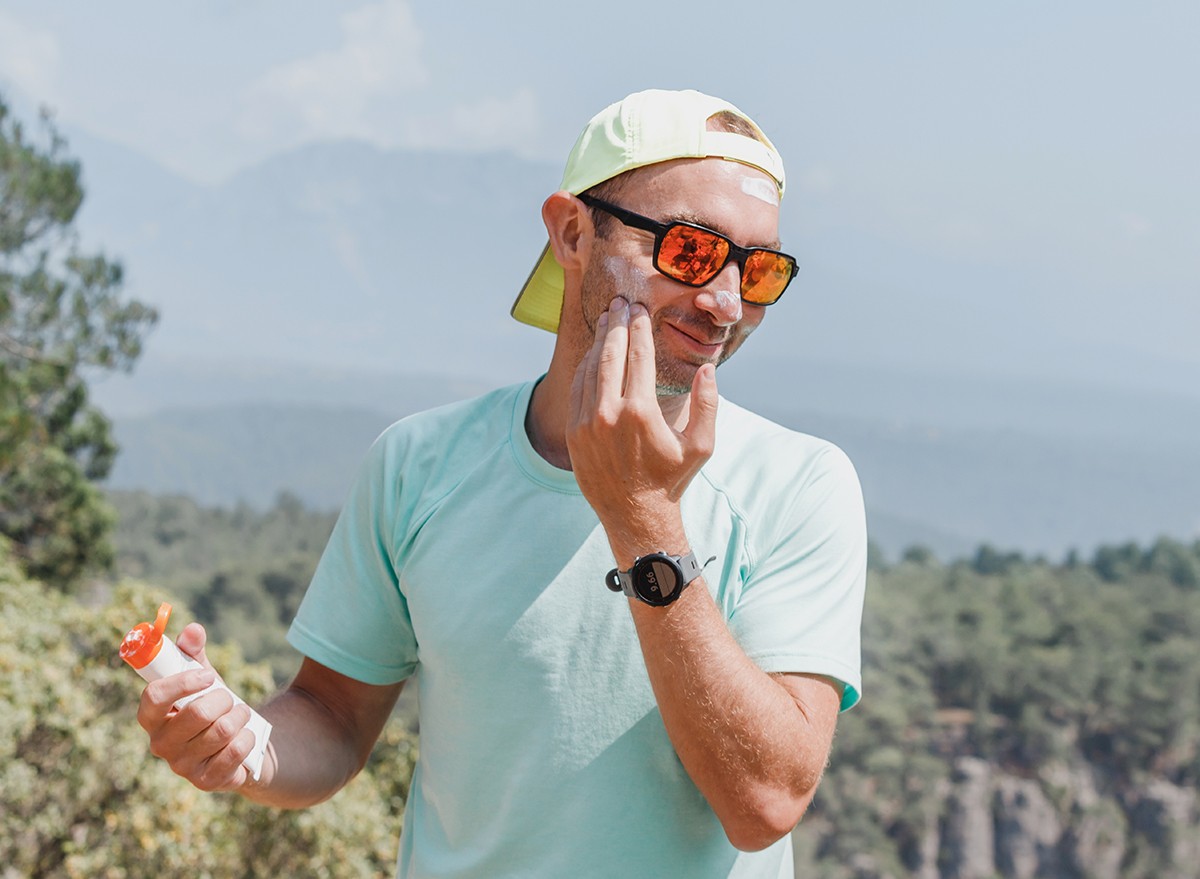Dermatologists Reveal the No. 1 Way to Prevent Wrinkles Naturally

Wrinkles are a natural part of the aging process—but lifestyle habits and skincare can make a significant impact on preventing the formation and appearance of fine lines. “As your body ages, you’ll notice fine lines start to appear on your body,” says the Cleveland Clinic. “This can start after age 25. The most common age group for people who look for wrinkle treatment is between ages 40 to 55. Wrinkles become more prominent after age 65.” Here’s how to prevent wrinkles naturally, according to experts.
RELATED: 8 Foods That Help Smooth Wrinkles.
Your Skin and the Sun

Protecting your skin from the sun is by far the most effective way to prevent premature wrinkles, experts say. “When it comes to wrinkles, there are other much more impactful factors than genetics at play. For instance, up to 90 percent of visible skin changes are a result of damage from the sun, called photo damage,” Ivona Percec, MD, PhD, physician at Penn Plastic Surgery, tells Penn Medicine.
Protective Clothing and Sunscreen

Protective clothing and sunscreen can help prevent sun damage. “Everyone should be using it every day,” Dr. Shari Lipner, a dermatologist at NewYork-Presbyterian/Weill Cornell Medical Center and associate professor of clinical dermatology at Weill Cornell Medicine, tells Health Matters. “Exposure to it in the long term increases your risk of three types of skin cancer, and it also causes skin aging.”
UV Rays

UV rays can damage skin even on overcast days. “UV (ultraviolet) rays can break down the elastic fibers and the firming collagen proteins in our skin, causing wrinkles,” Dr. Lipner says. “They can also stimulate some of the pigment-producing cells called melanocytes, and cause what we know as liver spots, or solar lentigines… People usually put on about 25% of the sunscreen that they need. In general, you should be applying a shot glass to cover yourself.”
Mineral Vs Chemical Sunscreens

There is debate over the safety of some chemical sunscreens. “Chemical sunscreens, which include active ingredients like oxybenzone and avobenzone, act like a sponge and absorb sunlight,” Dr. Lipner says. “Mineral sunscreens, typically with zinc oxide and titanium oxide, work by blocking the sun’s rays like a shield. Some chemical sunscreens’ ingredients are being further studied for how they get absorbed in the skin. If you have concerns, then the mineral sunscreens are the way to go.”
RELATED: How to Get Rid of Forehead Wrinkles.
Broad Spectrum Sunscreen

Opt for a broad spectrum sunscreen, experts advise. “While SPF 85 sounds like it offers more protection, higher SPF numbers can be misleading,” says dermatologist Lauren Taglia, MD, PhD, via Northwestern Medicine. “The fact is, the higher the SPF, the smaller the difference becomes. SPF 30 blocks 97 percent of the sun rays compared to SPF 50 which blocks 98 percent. Skin cancer doesn’t discriminate. People with darker skin tones need to use sunscreen (SPF 30 or above) as much as people with lighter complexions.”
Protective Clothing Is Key

While SPF is important, protective clothing is far more effective for blocking the sun’s rays. “Your clothing doesn’t just look great,” says SkinCancer.org. “It also absorbs or blocks harmful UV radiation and remains one of the most effective forms of protection against sun damage and skin cancer. What’s more, sun-protective clothing is the simplest way to stay safe; unlike sunscreen, you never need to reapply!”
Don’t Break the Bank

There is zero need to spend lots of money for wrinkle prevention. “Keep in mind: Some of the least expensive ways to fight aging involve no creams whatsoever,” says Dr Percec. “For instance, getting more sleep, hydrating and avoiding sun exposure can prevent signs of aging. Also, certain ingredients in foods, such as vitamin C in tomatoes, may keep your skin healthy and prevent wrinkles.”
Yes, Sun Exposure Has Benefits!

The sun is good for our health in a myriad of ways, so don’t avoid sun exposure completely. “The major source of our body’s vitamin D comes from our own production in the skin,” says Robert D. Ashley, MD, via UCLA Health. “This requires the ultraviolet rays from sunlight to form vitamin D3; both the liver and the kidneys are needed to then create the active form of vitamin D… In the summer in Miami — with 25 percent of the body exposed to the sun — a person would need only 3 minutes of sun exposure to make a sufficient amount of vitamin D. That same person — when placed in Boston in the winter — would need 23 minutes at noon to produce enough vitamin D.”
RELATED: 13 Best Under-Eye Patches for Wrinkles.